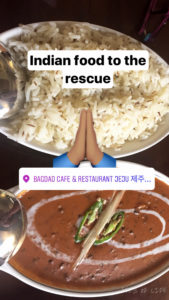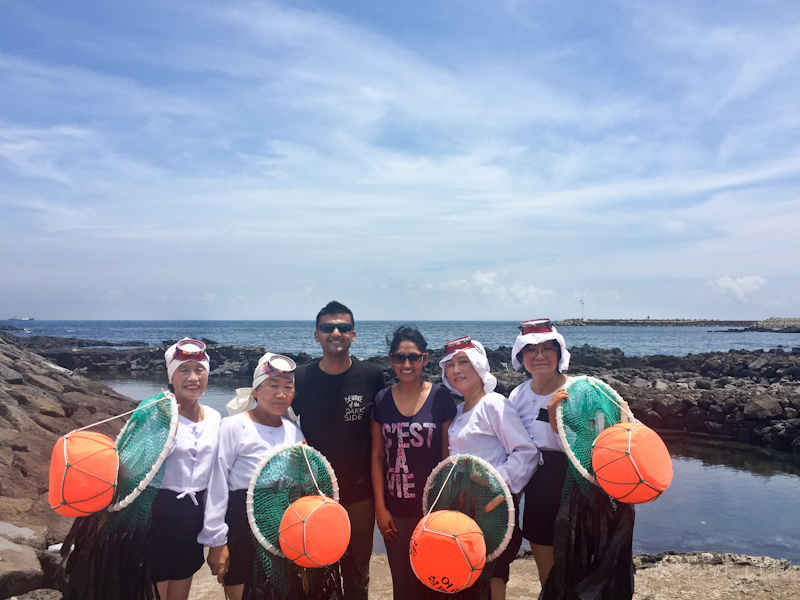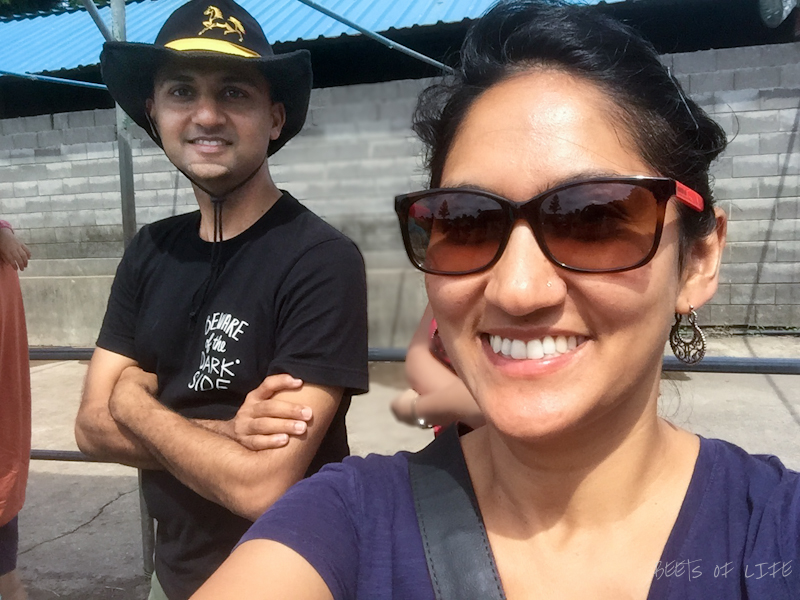Vegetarians Survival Guide: Jeju Island
My husband and I are vegetarian and finding food made in veggie stock, without eggs and meat surprises can be quite a monumental challenge on Jeju Island, South Korea. Many a time we abandoned hope of finding any vegetarian-friendly meals and despite trying our best at communicating with the waitress about our food preferences, we ended up with fish or ham peeping up at us.
But don’t despair, we have a few tips to make your trip to Jeju a more pleasant one than ours.
1) Rent a Car!
This is the #1 and MOST IMPORTANT tip we can give you. Jeju Island is not very well connected by bus and the journey can be long and slow. If you stay in Jeju city, you will be within walking distance of a couple veg-friendly restaurants. Not enough to keep you satiated for more than a few days. Hence, our recommendation would be to rent a car. A car allows you the freedom to explore the island at your own pace and gives you access to a few more vegetarian-friendly restaurants. However, to rent a car, you will need to apply for your international driver’s permit (IDP) before you leave.
2) Choose accommodation with a kitchen and stay in Jeju City
If you stay in a hostel or an Airbnb with a kitchen, life gets a lot easier for us veggie lovers. You can pick up groceries from a supermarket and prepare simple meals to take along when you go out exploring. Eating a good breakfast at home keeps us satiated a lot longer. We always opt to stay in an Airbnb when possible. Airbnb and Booking.com are our two favorite sites to book accommodation. We stayed in a beautiful rooftop apartment in downtown Itaewon, Seoul (think “Rooftop Prince”). Picked a lovely hostel in Jeju City, on Booking.com, that was close to the market and restaurants.
We generally prefer to be within walking distance to grocery stores and restaurants so we have easy access to food. On most days on the island, we carried sandwiches, fruits, and nuts for a midday snack.
3) Learn the language and make use of technology!
- Hello / Goodbye – Annyeong-haseyo
- No meat – Gogiga eobsda
- Only vegetables, please – Yachae Manjuseyo
- No Fish – Mulgogiga Eobsda.
- No Eggs – Gyelan-i Eobsda
- Thanks – Gomo-bseu-bnida (casual) or Kam-sahm-nida (formal)
- Delicious – Mas-issneun
- Here, please – Yo-gi-yo (used to get attention at a restaurant – Just say “Yo-gi-yo” loud and clear.
Along with learning and using these common phrases, we found it quite effective to let google translate do the job for us, especially when single words don’t do the job. It’s a great app and takes seconds to translate what you are trying to say.
4) Kimbab and Bibimbap are your friends!
Kimbap is a Korean version of sushi and I find it more appetizing than sushi itself. Yachae kimbap usually has carrots, pickled radish, green peppers or capsicum, cucumbers, egg, and spinach rolled in a layer of rice and seaweed. Make sure you tell them to skip the egg, crab stick, and ham!! You don’t want to be “meat surprised” like us.
Bibimbab is literally mixed rice with meat and vegetables so it’s easy to tell the waitress to keep the meat out. You get a yummy bowl of warm rice with seasoned spinach, soybean sprouts, stir-fried cucumbers and mushrooms and carrots. They drizzle sesame oil for flavor and serve it with a bowl of soup, kimchi, gochujang and a bunch of sides or bunchan. You have to check before you devour the sides as a lot of them will have fish sauce in them.
One side dish we got looked like shredded radish but when I was about to eat it, I saw two tiny eyes peering up at me. It was stir fired Anchovies. Yikes! Since then, I am very careful and smell test all the food before it enters my mouth. Thanks to my strong sense of smell, my nose has never betrayed me.
5) Plan ahead
In times like this, we fall back on Indian food. More than likely, you will find one close enough to you. Jeju city has one Indian restaurant next to city hall and another close to the airport.
6) Take tours with companies that provide vegetarian options for lunch
7) Seek out international cuisines
8) Get over it and be flexible
Over our travels across the world, in so many meat-eating countries, we have unknowingly eaten something we do not eat. In Jeju, despite communicating with the chef that we are vegetarian and don’t eat fish, meat or animal products, we still ended up being served a meal with meat in it. Things do get lost in translation and travel has taught us to be flexible! This may or may not be okay for you but it’s something to seriously consider if you want to travel to places that don’t understand or support your choices. We have had to switch to eating eggs and I’m pretty sure we’ve unknowingly eaten meals cooked in lard or chicken/beef stock.
Our method is to do the “smell test” and if it doesn’t smell funky, or we don’t gag, then we go for it. We’d rather be grateful and eat our food with a positive mindset than be negative and disillusioned.
Yeah, being a vegetarian can be challenging. We have found that it also adds to our experience. It is not something we want to easily compromise on, and it helps us get out of our comfort zone to try and find food in typically non-vegetarian countries. It also forces us to interact with locals in an untraditional way, which helps make for a better travel experience and spread the word about vegetarianism! Read more of our tips on how to survive as a vegetarian traveler.
What are some of your tricks and tips? How is it different for people with other dietary considerations? Comment below.









